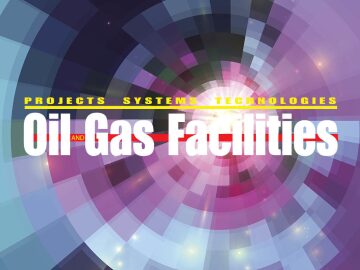
The cost of new technologies has been a recurring issue in the facilities world for many years, and the central theme of return on investment (ROI) is usually “front and center” in the dialogue. A close examination generates another question, “What is the value of a technology, and how much will it cost in total?”
Understanding the value proposition is not a trivial matter. When investing in facilities technologies, we have traditionally looked to invest in those that will cost less to buy (capital expenditure [Capex]) or run (operating expenditure [Opex]). This simple driver has delivered new technologies in equipment, chemicals, simulation, surveillance, piping, and structures. Many of the technologies developed in the past 30 years have widespread use across our industry, which yields a low unit cost for development and a broad opportunity marketplace.
However, in the past few years, technologies have emerged that are extremely costly to develop, but have limited applications. A new question arises: Why spend large sums of money to develop niche technologies?
These technologies are valued not just for reductions in Capex and Opex, but for enhanced or improved recovery. Their value is found not in dollars saved, but in barrels of oil recovered. Although, traditionally, oil recovery as a driver has been the domain of the reservoir engineer, geologist, or driller, it is growing in relevance for technologies important in the projects, facilities, and construction areas.
Using the development of multiphase subsea boosting as an example, it could cost about USD 25 million to develop a pump for a given service, excluding the cost of a field demonstration or pilot. The additional development costs required for new power technologies and adjustable speed drives could drive the total investment to more than USD 40 million to deliver field-ready multiphase pumping capability.
This is a huge sum of money to spend on the development of a pump, and typically, no one would invest if it was just a less expensive derivative of existing technology. However, if the new pump is an enabler for improved oil recovery (IOR) by lowering backpressure on wells and allowing greater production, or in delivering long offset stranded assets, then the value proposition is significantly different—value is measured in the recovery of tens of millions of barrels. At USD 100/bbl, and even at USD 50/bbl, the ROI is significant.
Hartley et al. (2014) illustrate the value of recoverables in the US Gulf of Mexico. The authors provided a production performance analysis of configurations for electric submersible and mudline pumps in greenfield developments to determine the improvement in recoverables. An economic performance evaluation compared the value of the increased recoverables against the costs of the hardware and installation, annual operational costs, and intervention and maintenance costs over a 30-year field life. They concluded that small improvements in the recovery factor can have a significant effect on a project’s economics, given the large size of the reservoirs.
Returning to the example of the multiphase subsea boosting, despite the potential value proposition, USD 40 million is a significant investment in a single technology, and the cost encourages operators and technology suppliers to work together to ensure success.
Collaboration is the key. Many technology providers are unwilling to invest large sums of money, if the market is ill-defined. They seek commitments to use the technology and for help in identifying the potential market demand. They also need operator insight into how the technology will best be used and what it is expected to deliver.
For their part, operators want quid pro quo, most often in the form of preferential queue rights, or royalties for third party sales. When such vast sums are involved in the research and development (R&D) of a technology, it is thoroughly scrutinized, and the partners each want a “win.”
My experience shows that in the high-cost world of deepwater technologies, facilities engineers can agree on the scope of technology development—who does and pays for what—but the intellectual property and commercial terms are minefields requiring hard-earned legal agreements and strict contractual terms.
This is a change from the past when collaborative technology investments took the form of industrywide projects that were sponsored by companies with common goals. Costs were moderate (hundreds of thousands of dollars per participant), contracts were simpler, and the technologies developed were of common good.
I recall several joint industry projects that delivered technologies, such as gas/liquid hydrocyclones, media filters for seawater and produced water, and selection and optimization protocols for produced water reinjection systems. Such technology development structures still exist and are flourishing—Capex and Opex are still good value targets for facilities technologies.
Are huge investment sums going to be the norm? For deepwater technologies, I expect so. The next frontier of 20,000-lb pressure rating is beckoning as back-to-the beach ultralong tiebacks (up to 200 km for gas) are being considered, subsea gas compression is a reality, and fully autonomous remote production is highly probable. High-pressure/high-temperature, high carbon dioxide, Arctic, and ultradeepwater also present future opportunities that one day will drive the development of new and improved technologies.
A recent literature review of a small global portfolio of fewer than10 fields requiring IOR facilities technologies, including subsea compression, boosting, and flow assurance, yielded a technology development portfolio cost of more than USD 350 million to deliver incremental capabilities to today’s technologies. No step changes are delivered for this investment. This is quite an eye-opener and will make life interesting for those of us involved in the new world of facilities R&D.
For Further ReadingOTC 25215 Paleogene Secondary Recovery Analysis by J. Hartley, E. Smedstad, E. Widjaja et al.,FMC Technologies.

